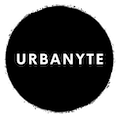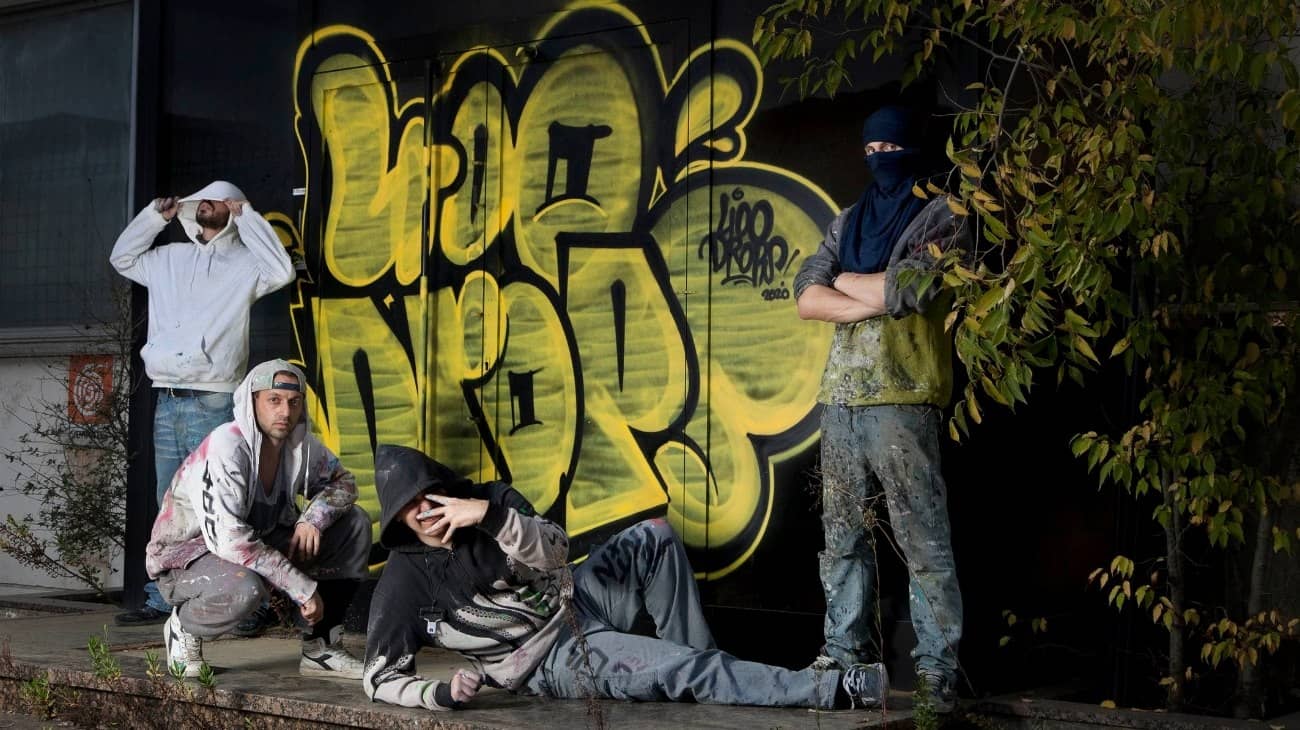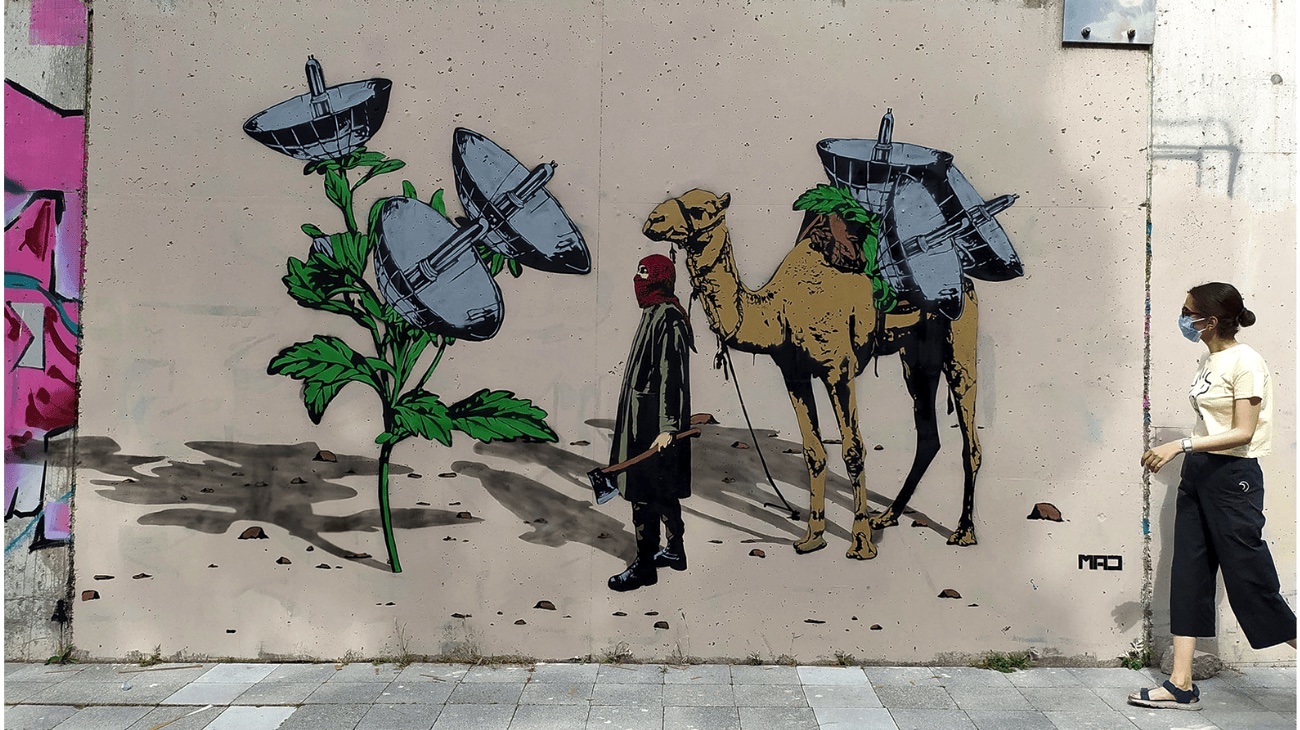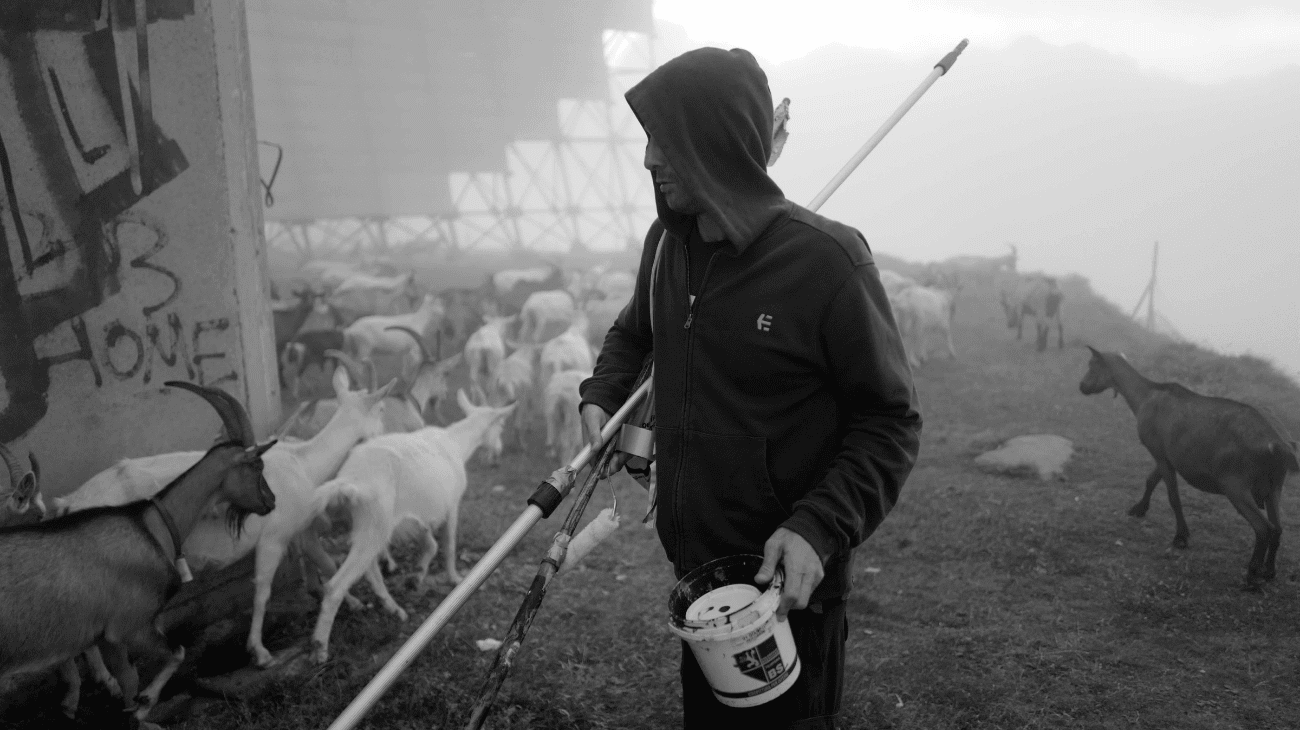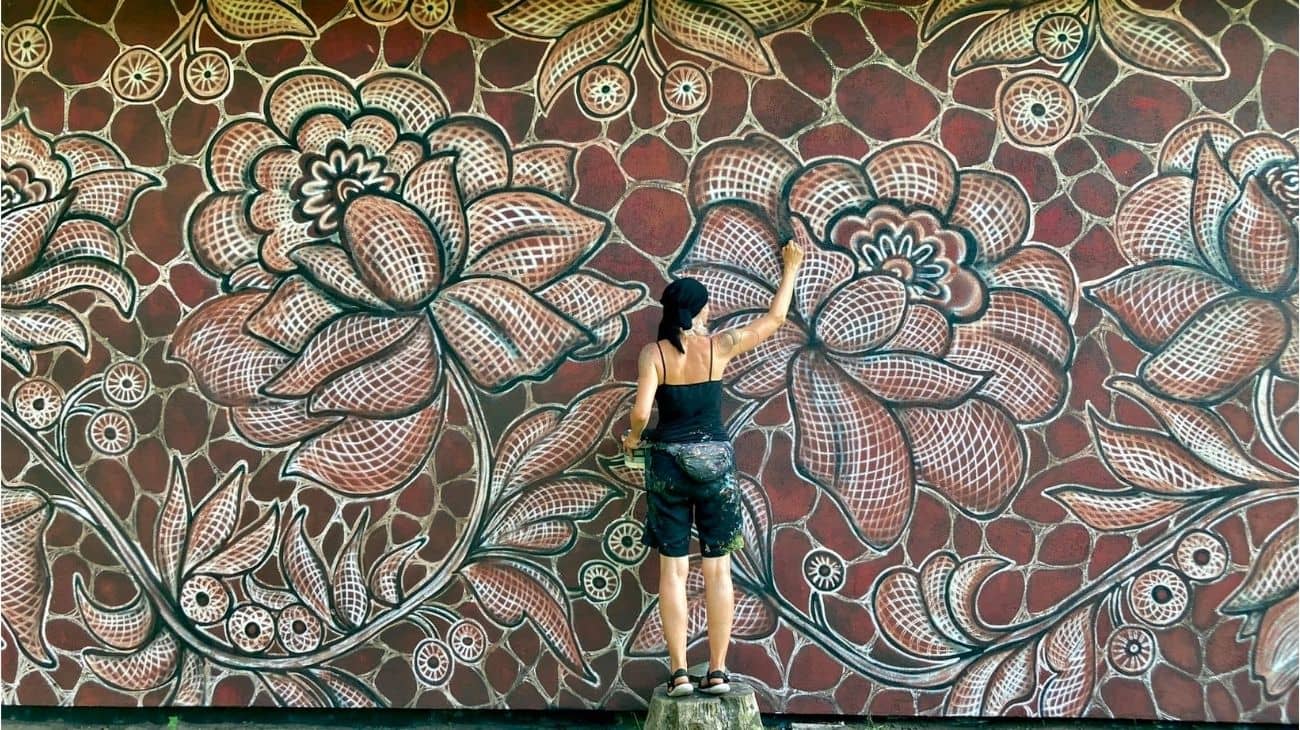
NESPOON
Interview with Polish street artist NESPOON:
I’ve never liked laces. Before I started working with them, I thought lace was something old-fashioned, from a grandmother’s dusty apartment. Today it seems to me that in every lace there is a universal aesthetic code, which is deeply embedded in every culture.
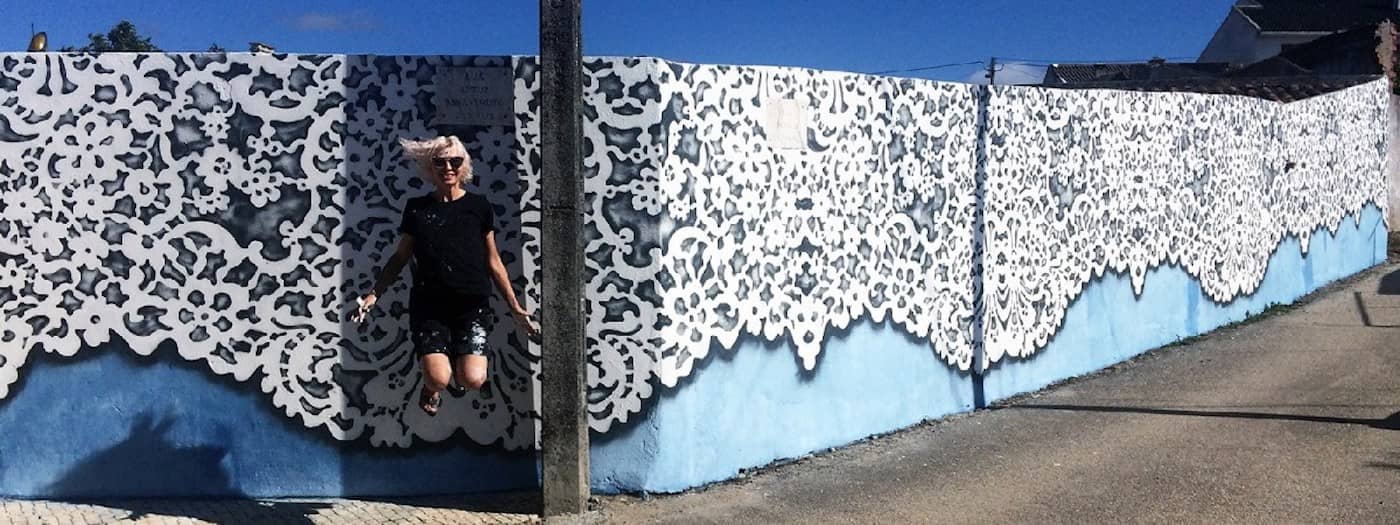
Bombarral, Portugal I 2017
Could you tell us who you are and where the name NeSpoon comes from?
It comes from “There is no spoon,” the sentence from the movie The Matrix. In short, it means that the borders are just in your head. When you realize this, you can jump from one skyscraper to another.
By the way, NeSpoon is my real name, legally, not an alias. I don’t know who Elżbieta Dymna is.
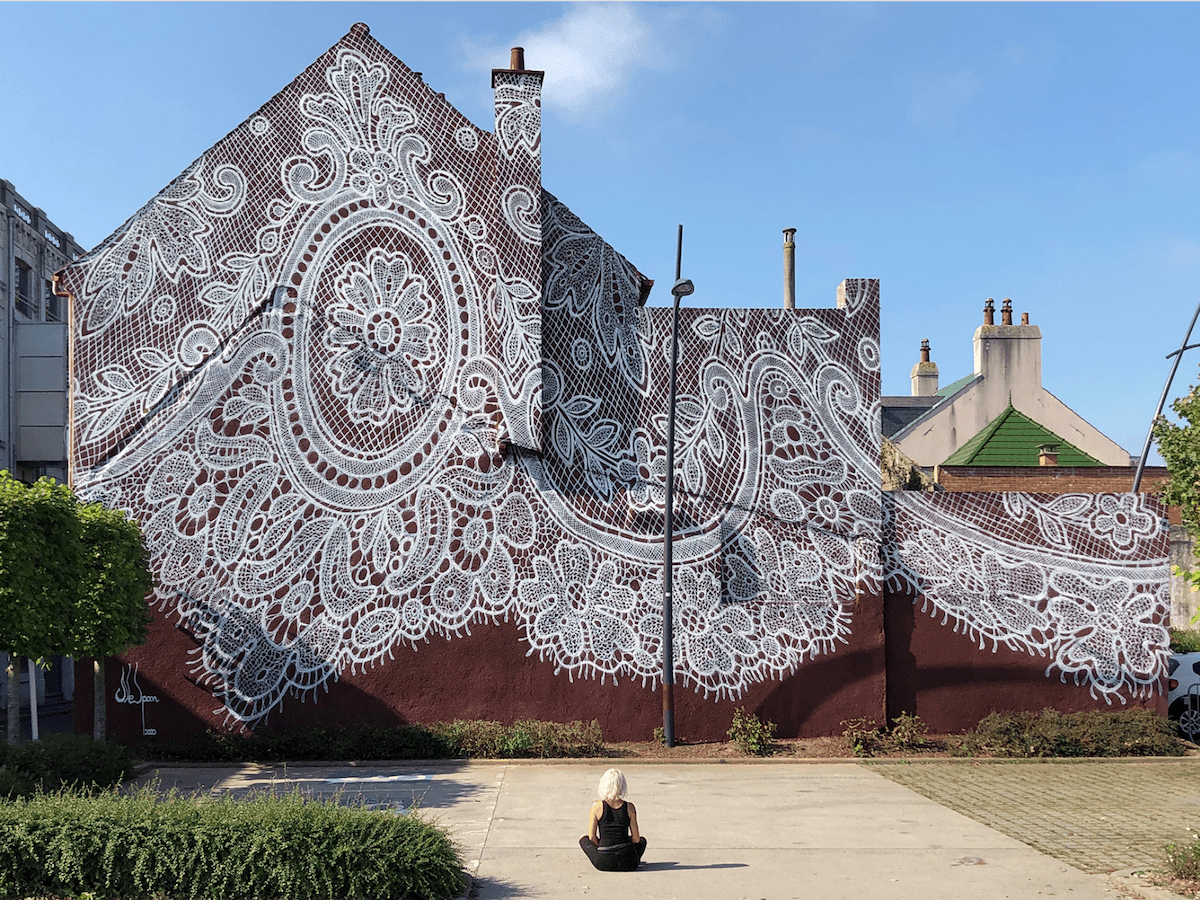
Calais, France I 2020
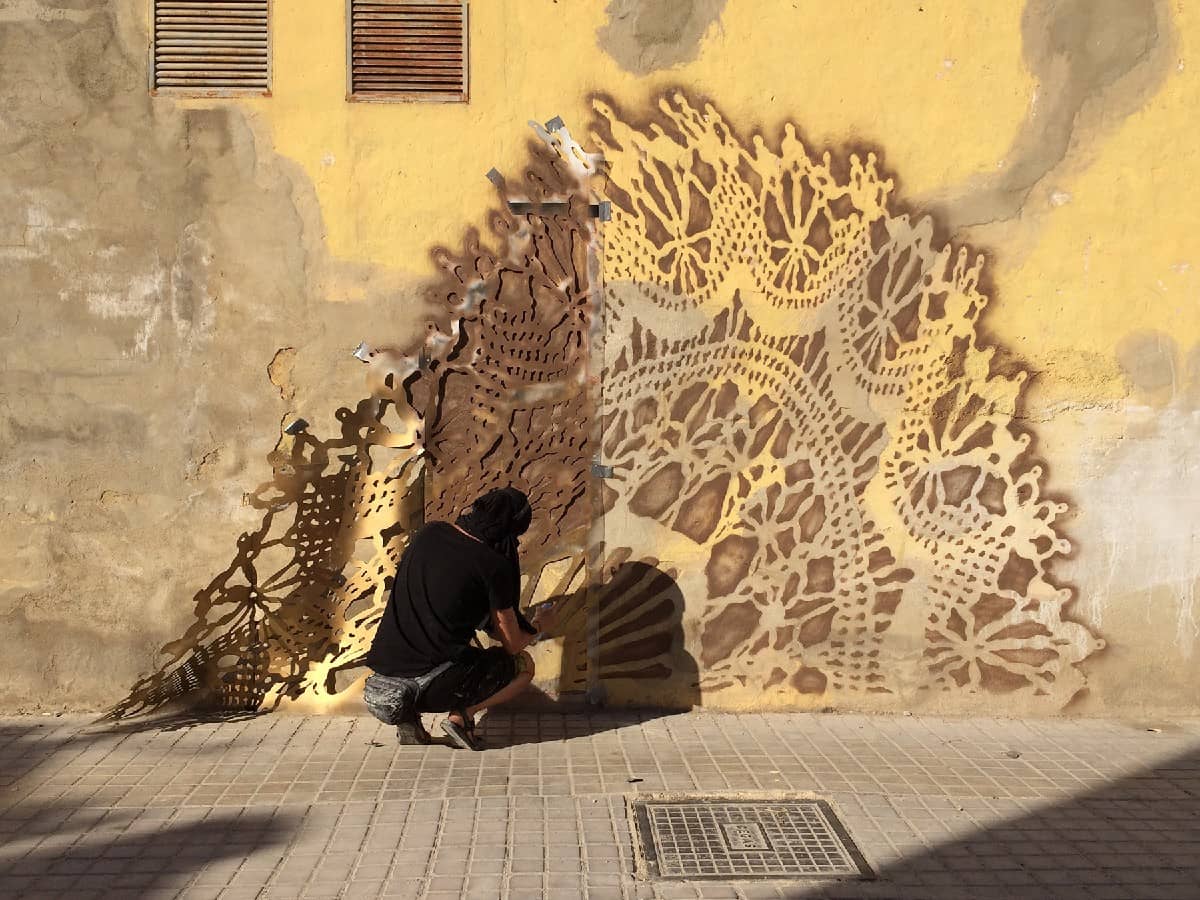
Valencia, Spain I 2017
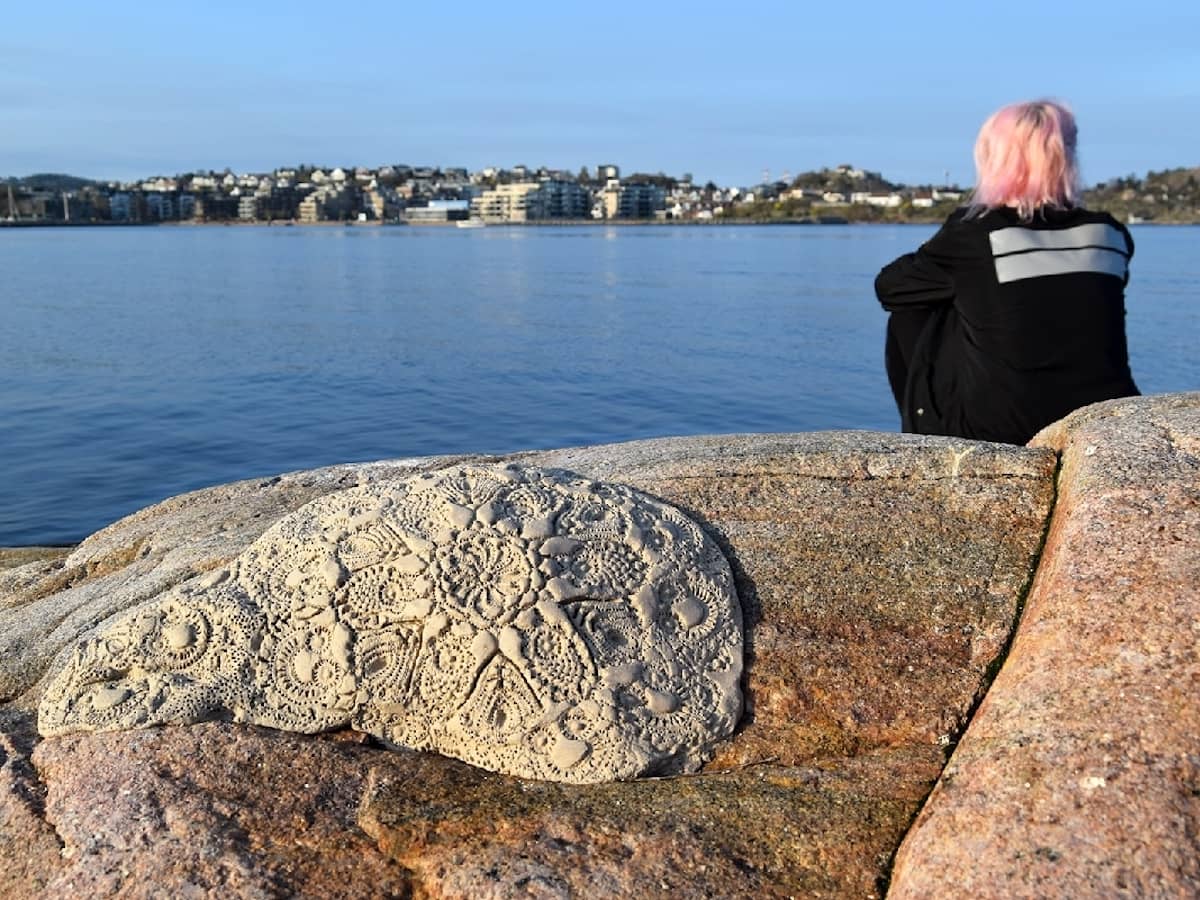
Kristiansand, Norway I 2018
Do you have a formal art education? How and why did you get started in the urban art scene?
I have been painting as long as I can remember, since kindergarten. I wanted to be a “real artist” at the age of six, when other girls dreamed of being princesses or fairies. However, I only started to do art on the streets in 2009.
Before that, I painted dark, sad oil paintings. At one point I found it to be a dead end. I had a two-year break, and then I started learning about ceramics. Ceramic objects with lacy motifs were the first works I placed on the street. Graffiti, murals, and installations appeared in the following years.
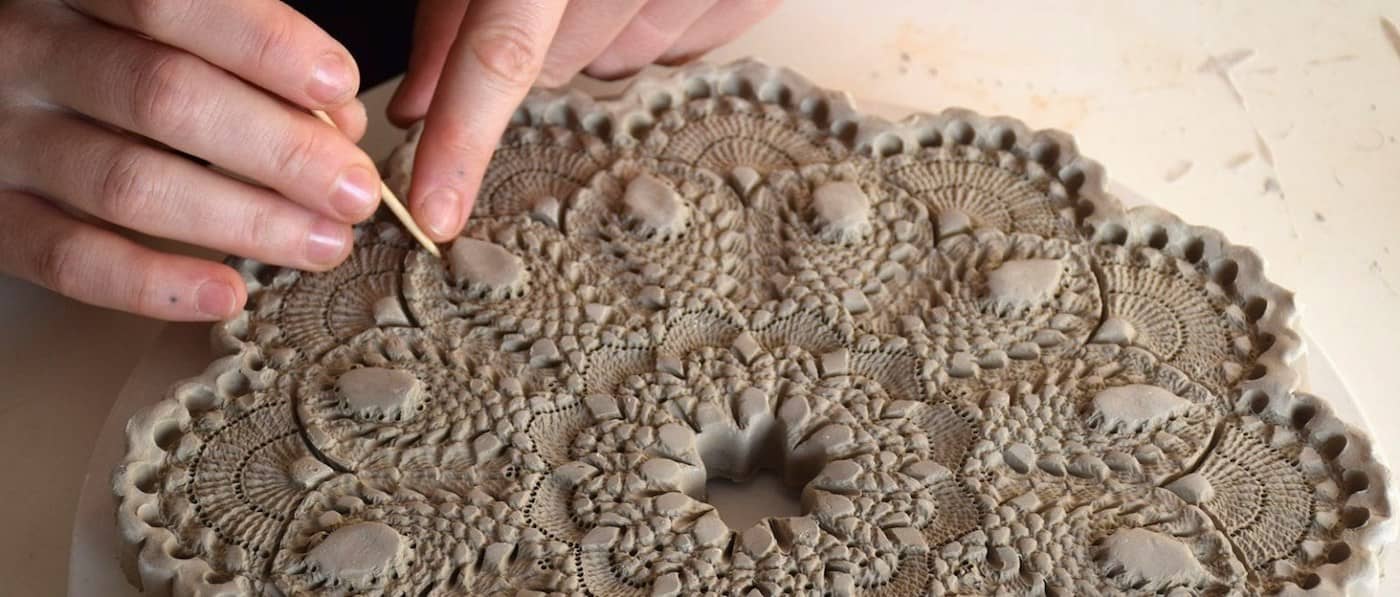
You are well known for your large lace murals that cover houses all over the world, but you also work with paint, sculpture, and pottery. Ceramic urban art is at the heart of your activity, and over the years you have left several hundred ceramic objects on the streets of various cities around the globe. What techniques do you use? What connects your different artistic fields?
I get easily bored and often change techniques. I am always learning something new; lately, it is screen printing. For illegal graffiti, I use stencils. For murals, both stencils and free hand painting, depending on the project. In a gallery it can be video art or sculpture – why not?
However, my basic media is ceramics. Clay and paint are very natural substances, close to the element of earth. I like to have physical contact with them, to get my hands dirty.
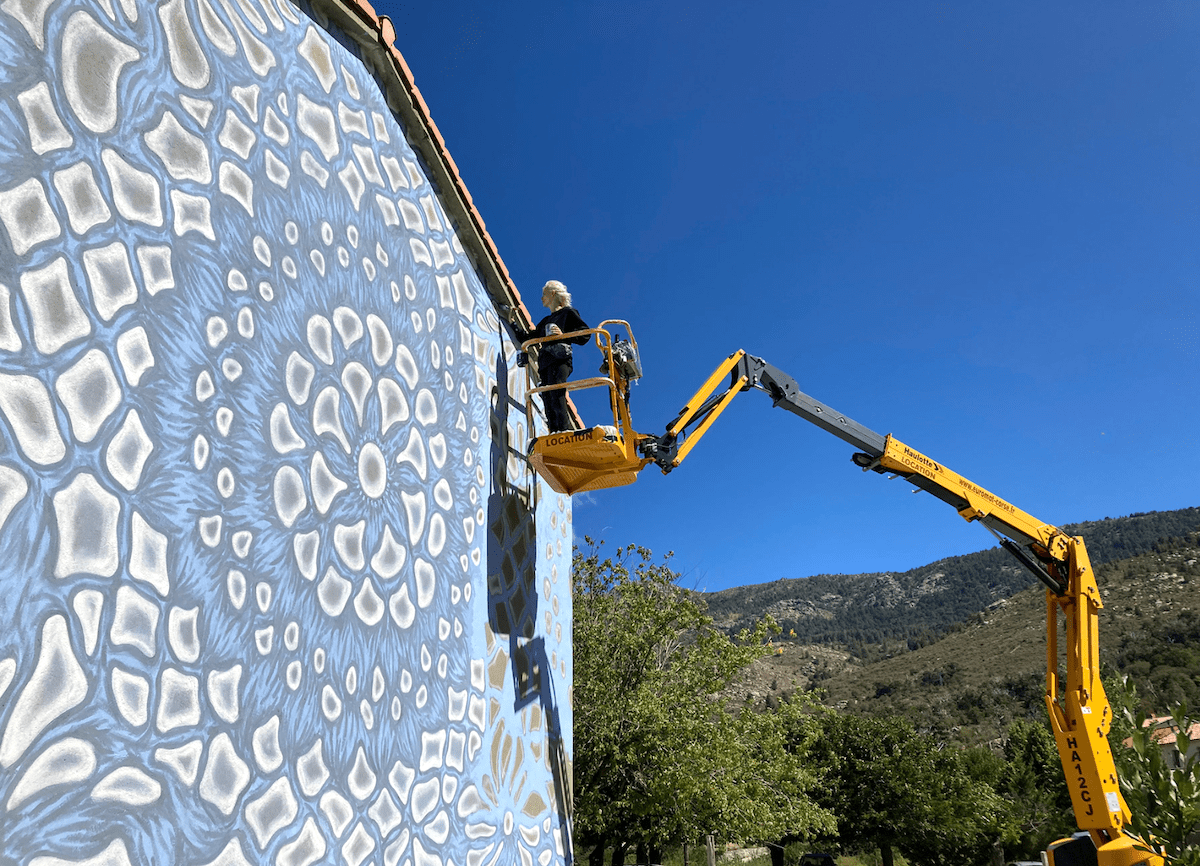
Corsica, France I 2020
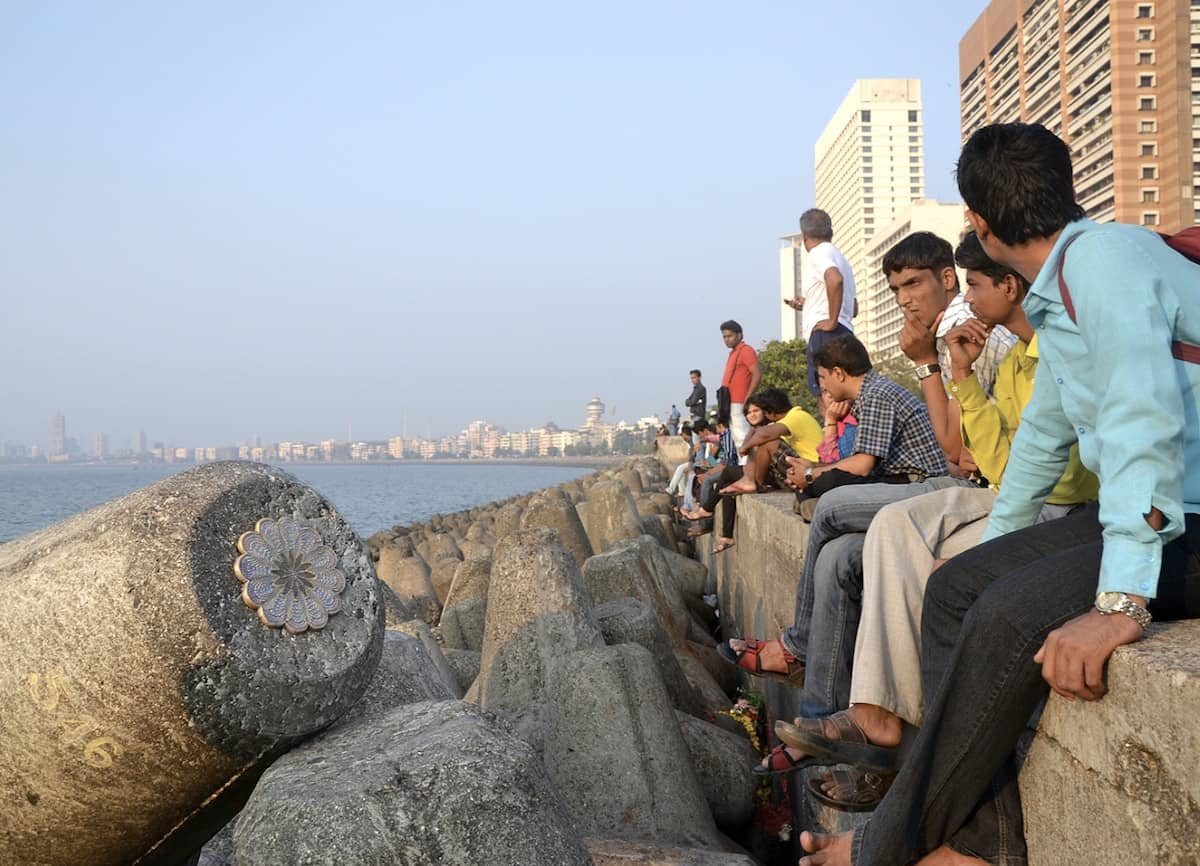
Mumbaj, India I 2012
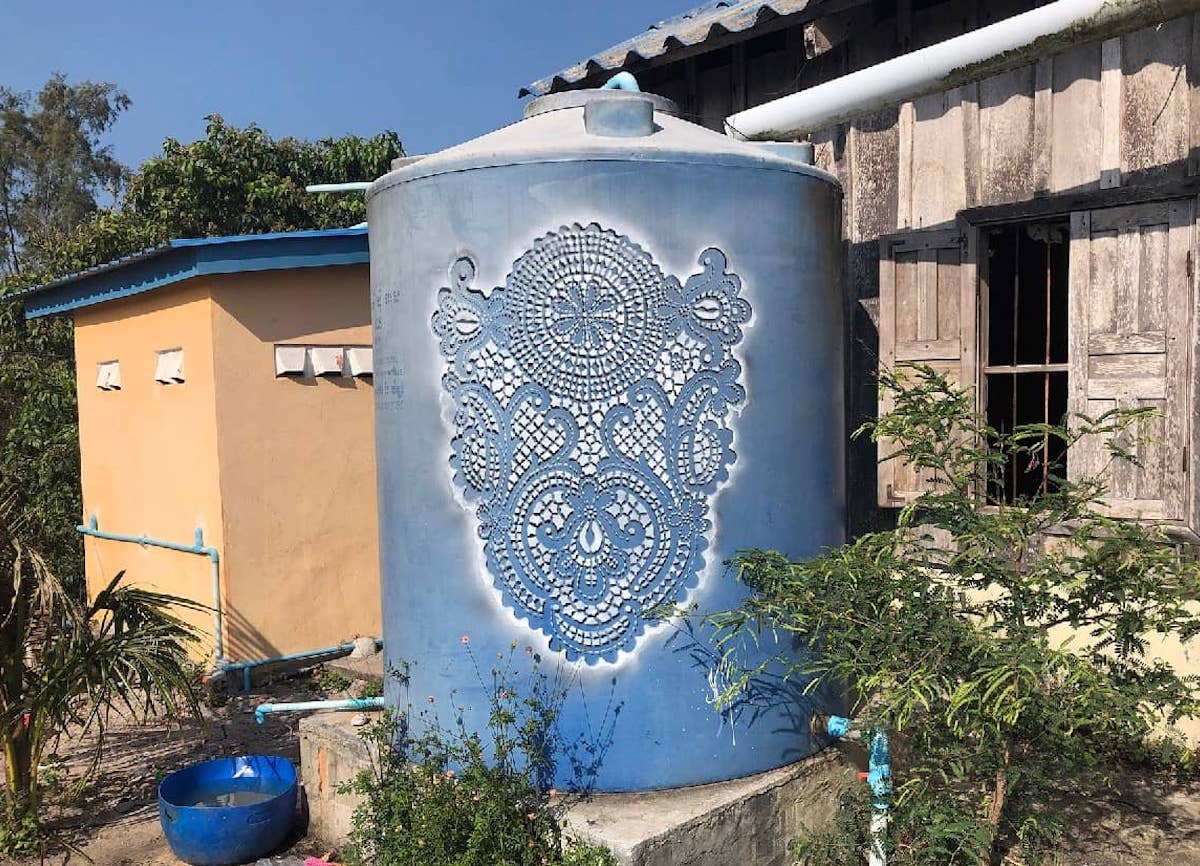
KohRong, Cambodja I 2020
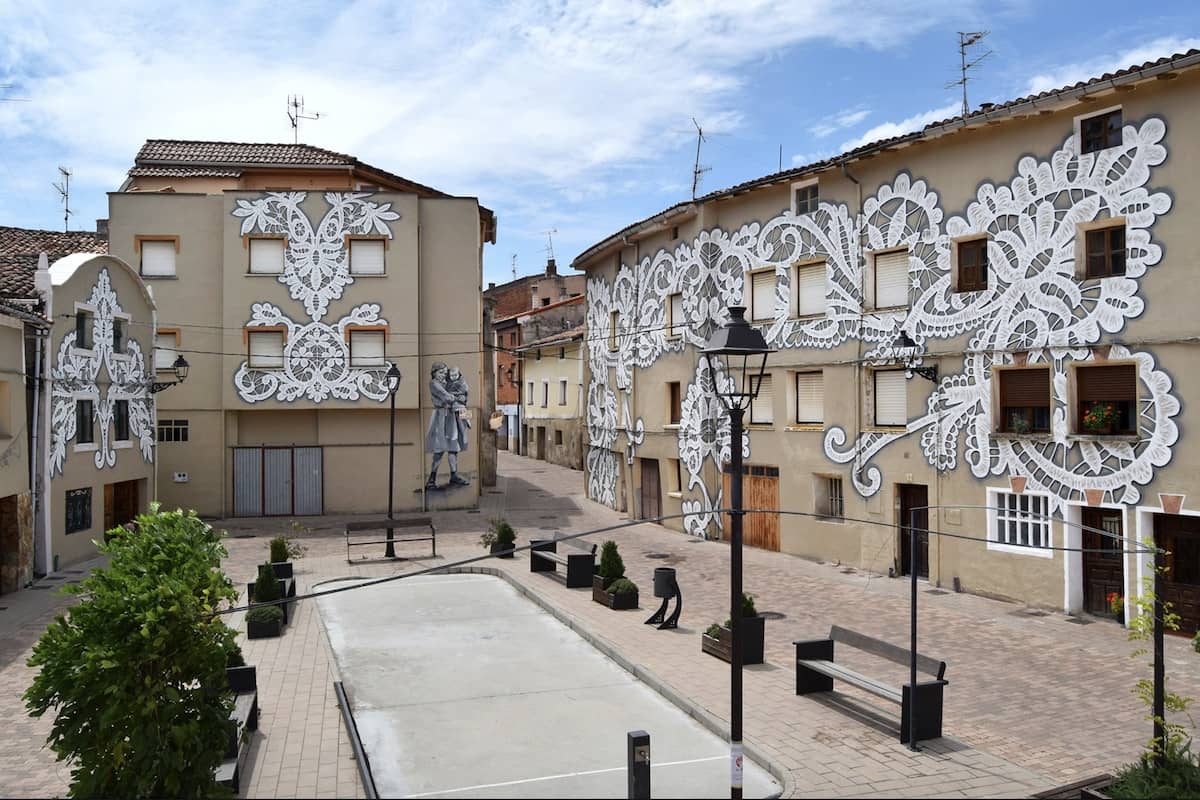
Belorado, Spain I 2019
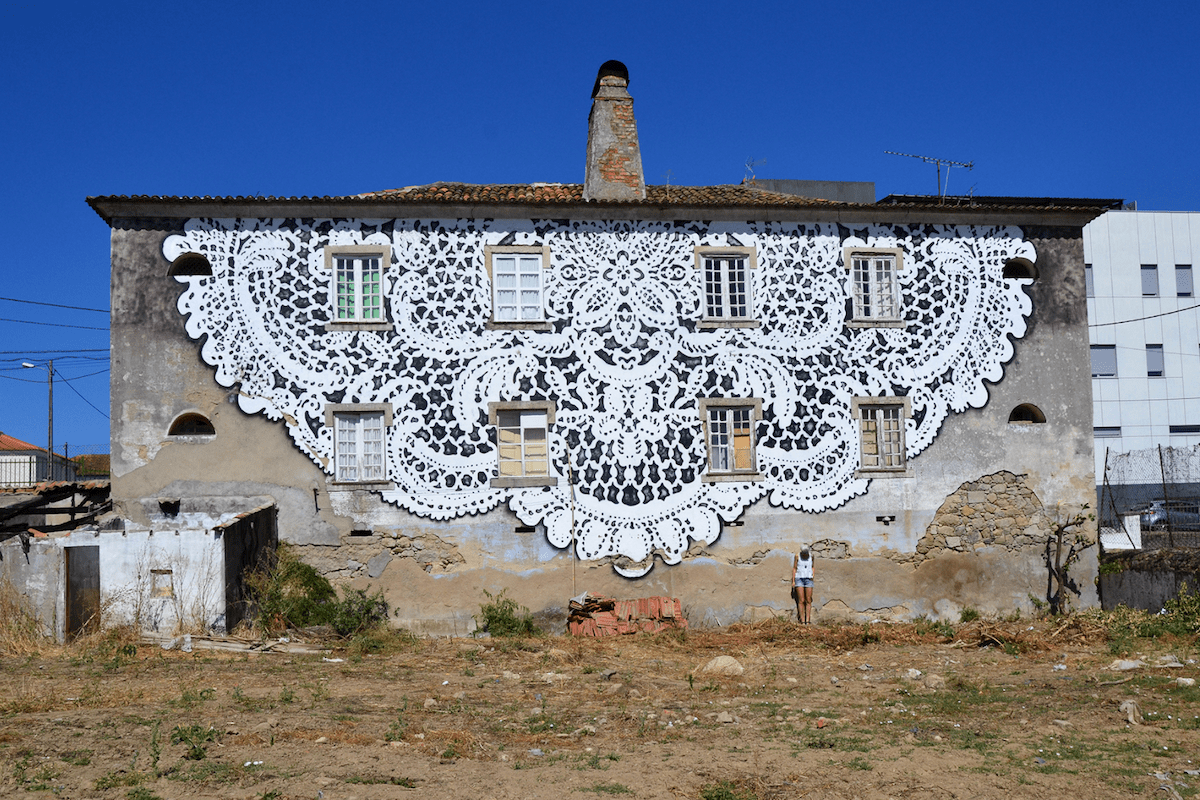
Fundão, Portugal I 2014
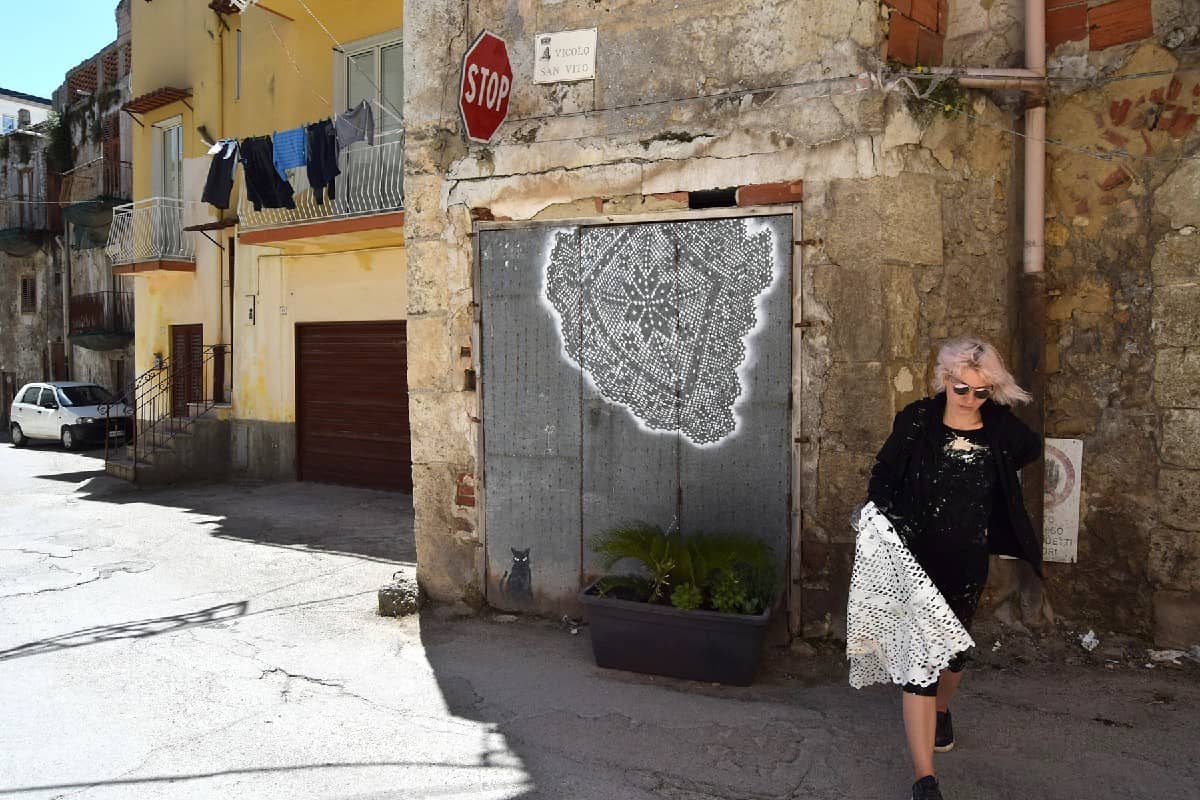
Favara, Sicily, Italy I 2019
Why lace?
I’ve never liked laces. Before I started working with them, I thought lace was something old-fashioned, from a grandmother’s dusty apartment. Today it seems to me that in every lace there is a universal aesthetic code, which is deeply embedded in every culture. When I add colors to my ceramics, people say that I am inspired by Tibetan mandalas, or Moroccan ceramics, or even native pre-Columbian art. Lace patterns contain a very basic code of beauty, common for most people on Earth. I think it’s because these motifs come from nature. They are present all around us, in goblets of flowers, in snowflakes, in frost on the window, in the skeletons of sea creatures. They are older than humanity.
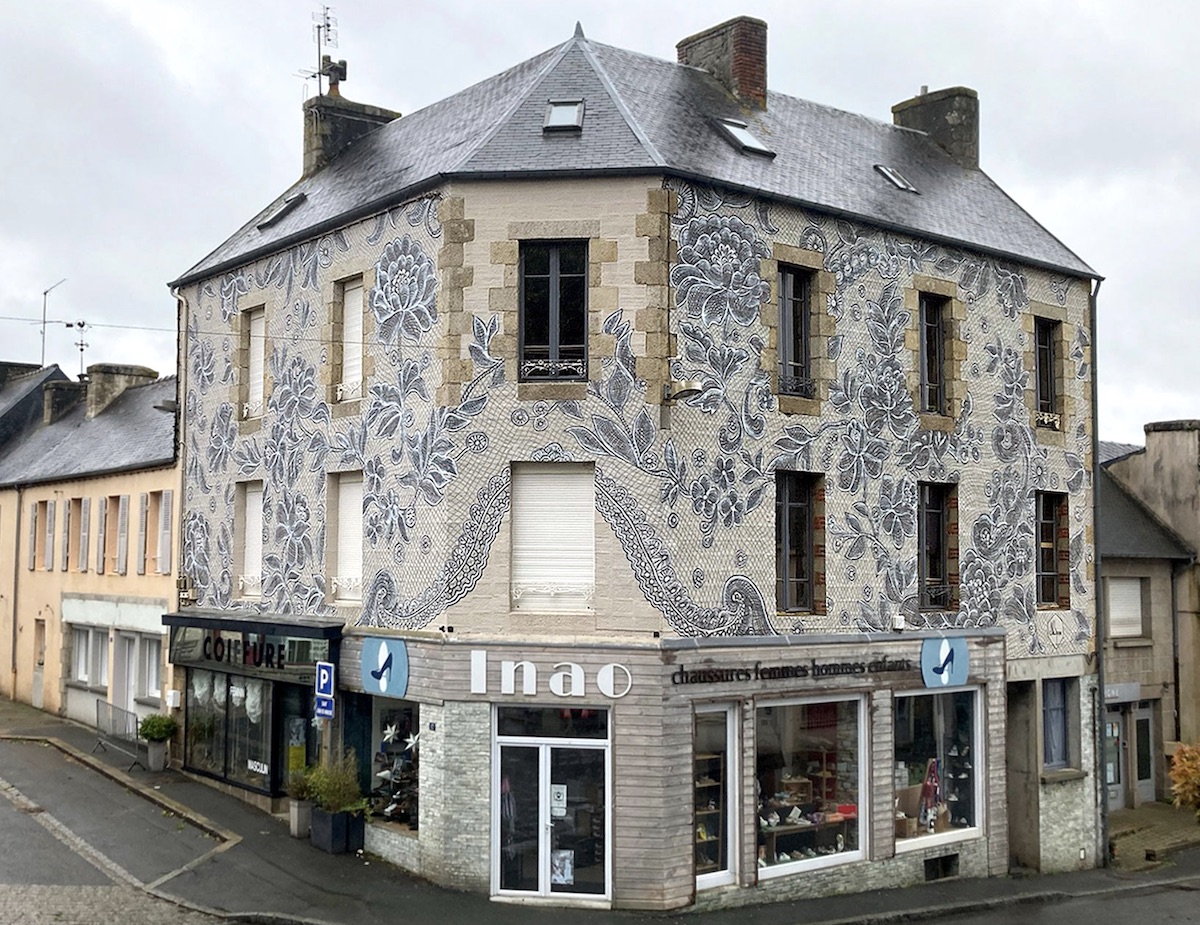
Callac, France | 2021
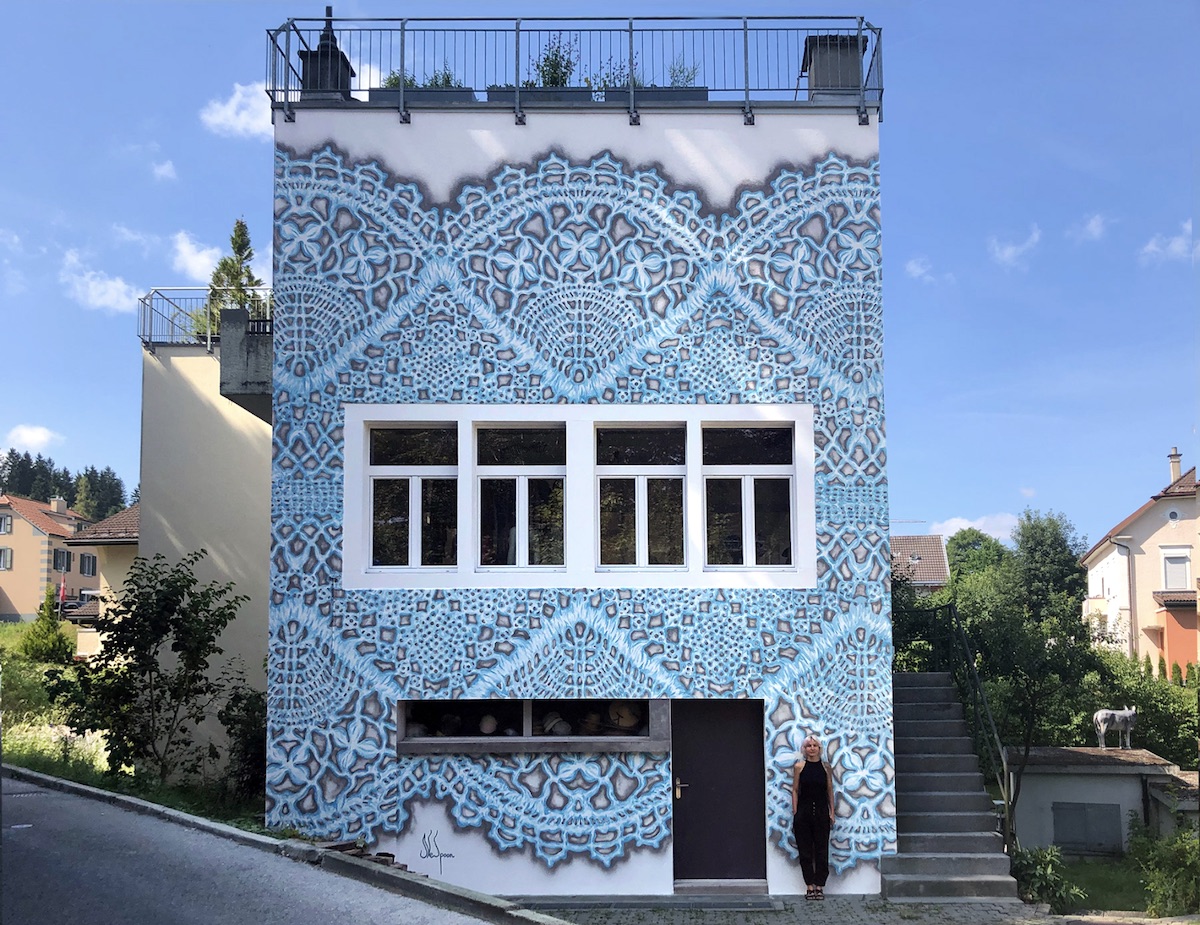
Le Locle, Switzerland | 2019
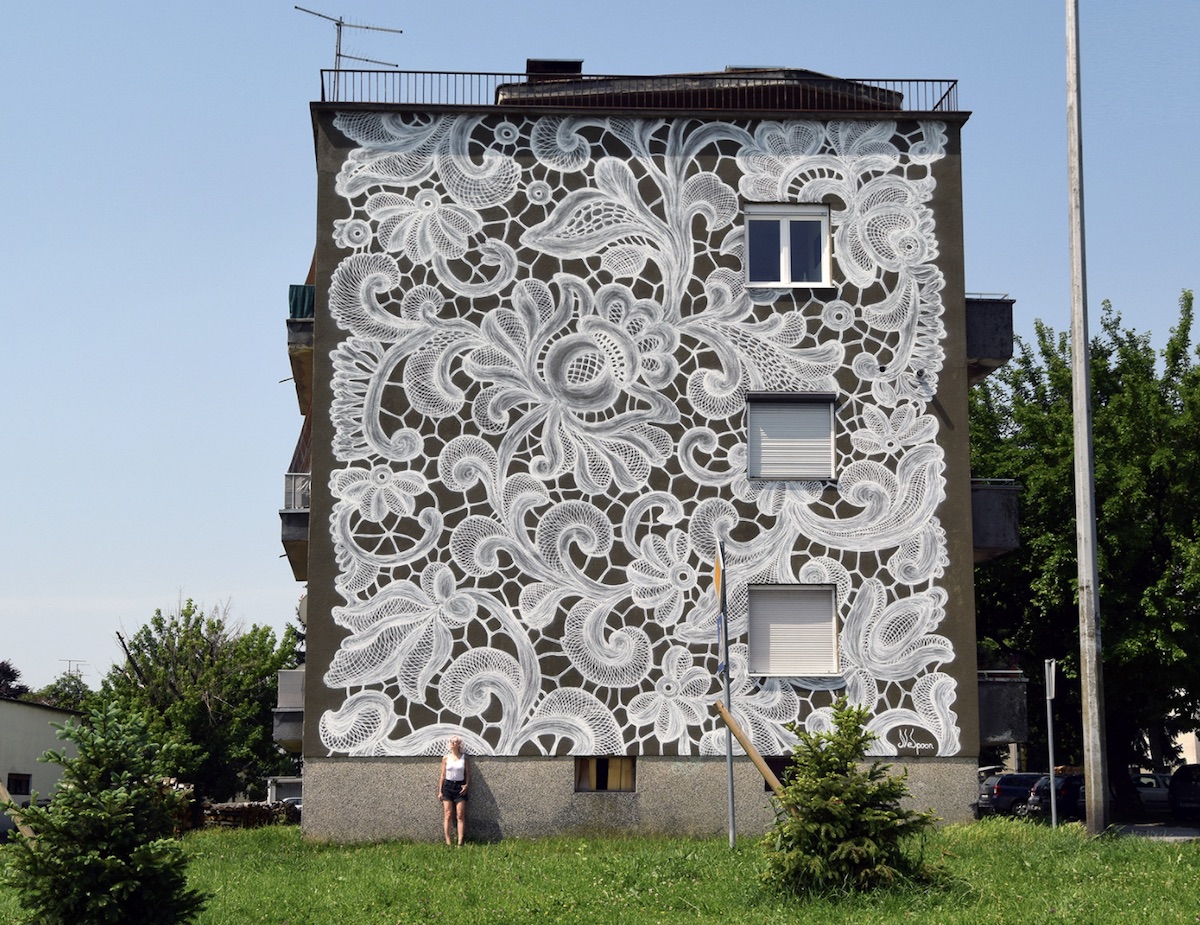
Sisak, Croatia I 2019
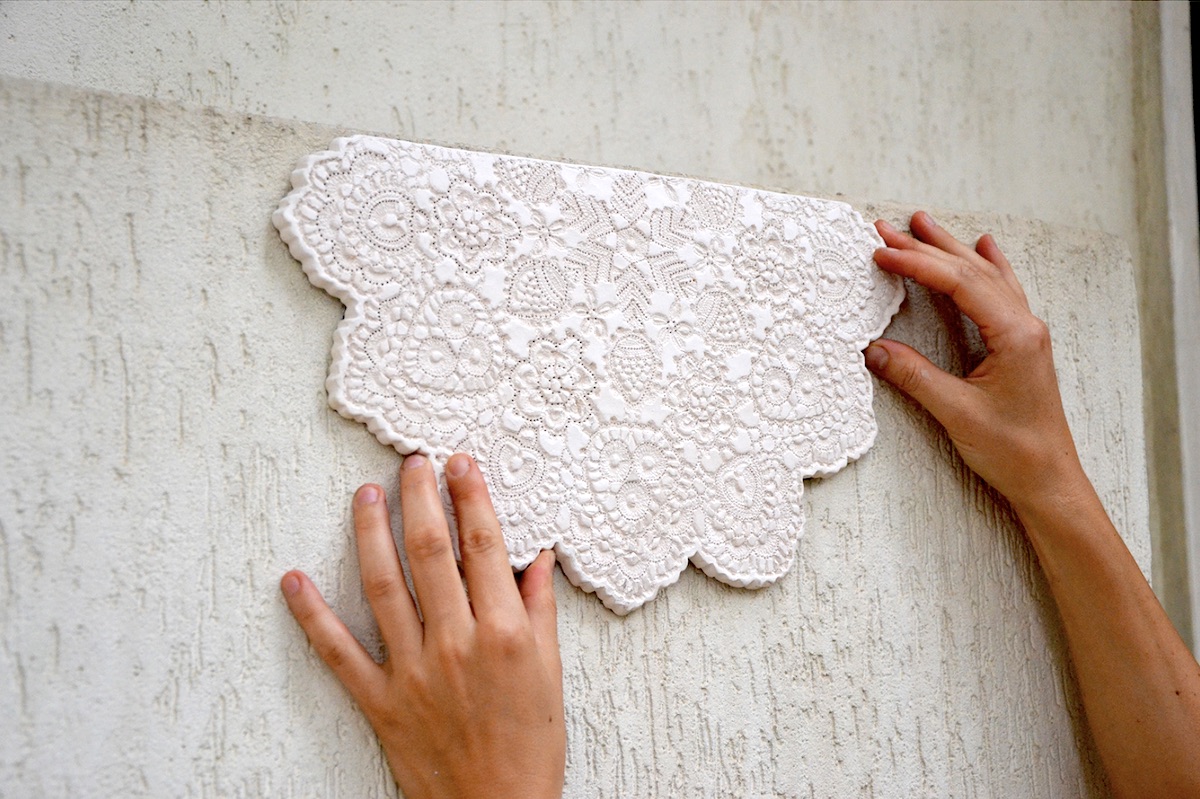
Grottaglie, Italy | 2011
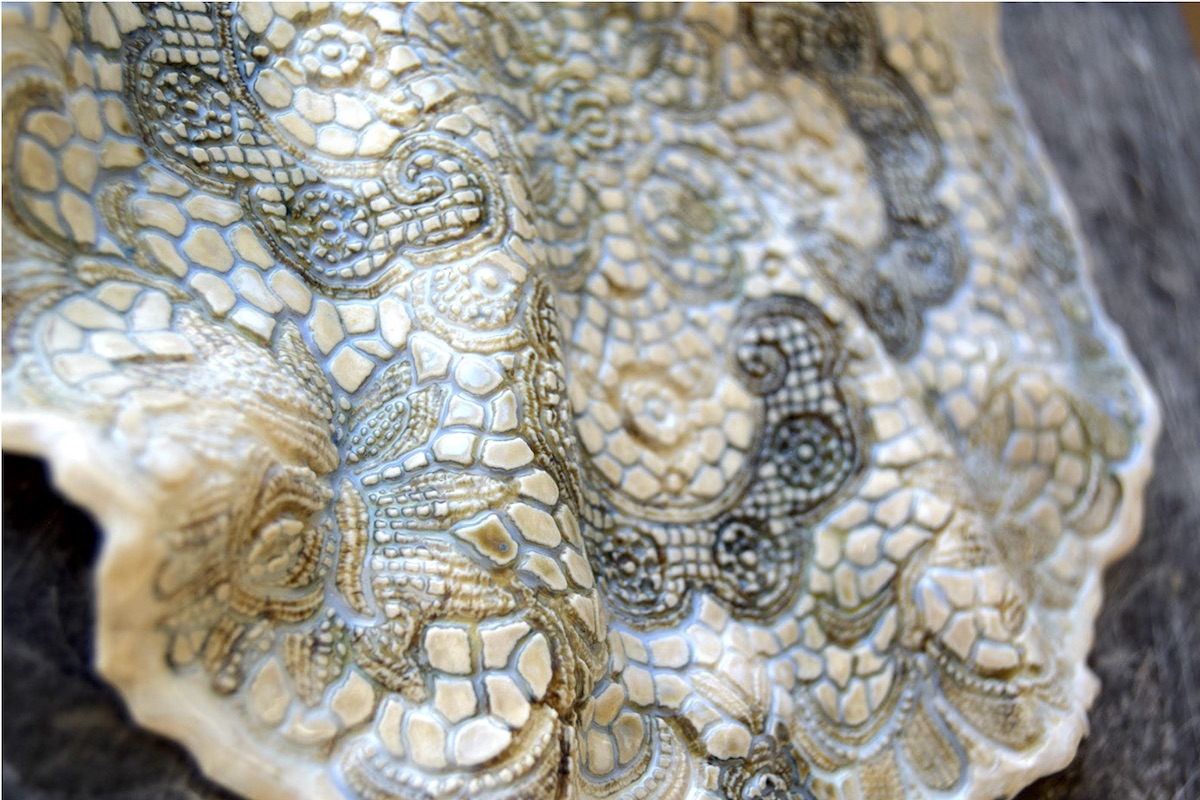
Sisak, Croatia | 2019
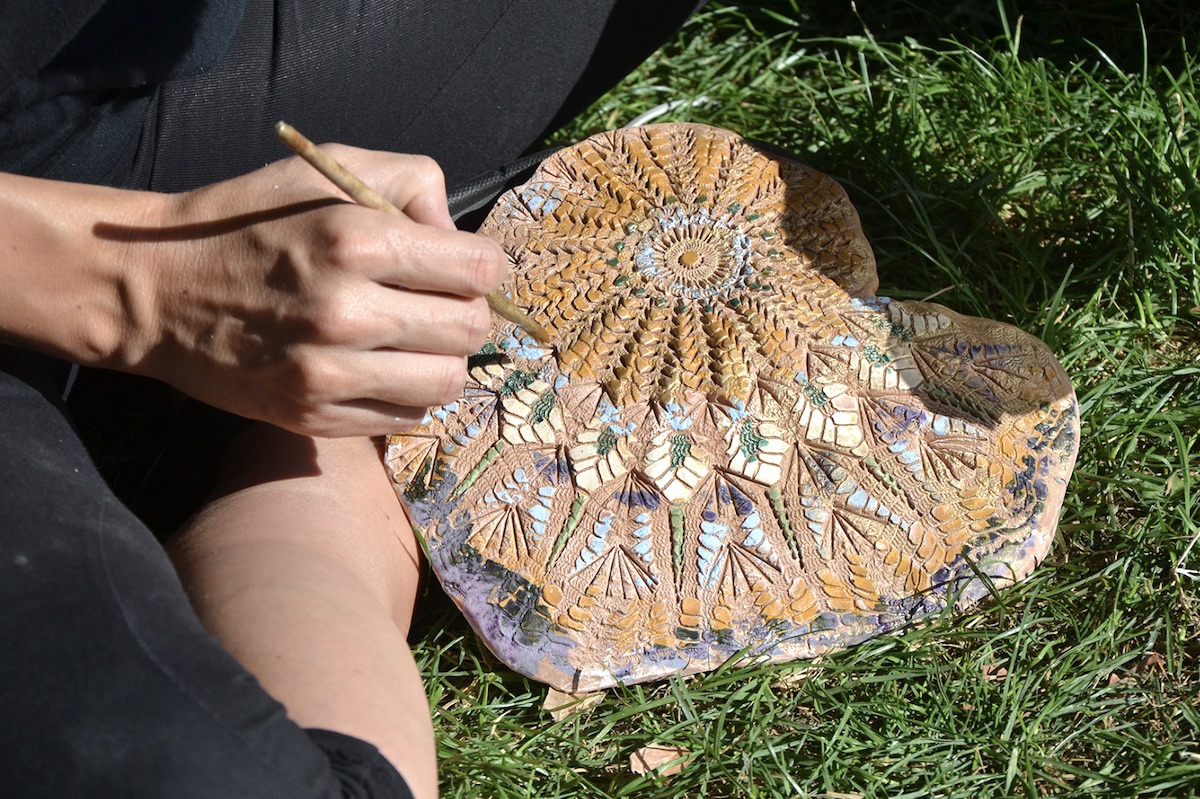
Fundao, Portugal | 2014
What are your sources of Inspiration?
My art is always made in situ, set in a local context. I always use local lace patterns, if they exist. I check local museums. I respect and commemorate the emotional bond between individual patterns and particular cities or even particular groups of lace-makers. If there is no tradition of lace-making in the area where I work, I ask for laces in the homes of elderly people living nearby. I always find something. My last mural, which I made in Greece this month, is based on a lace pattern made by the mother of the owner of the house I painted.
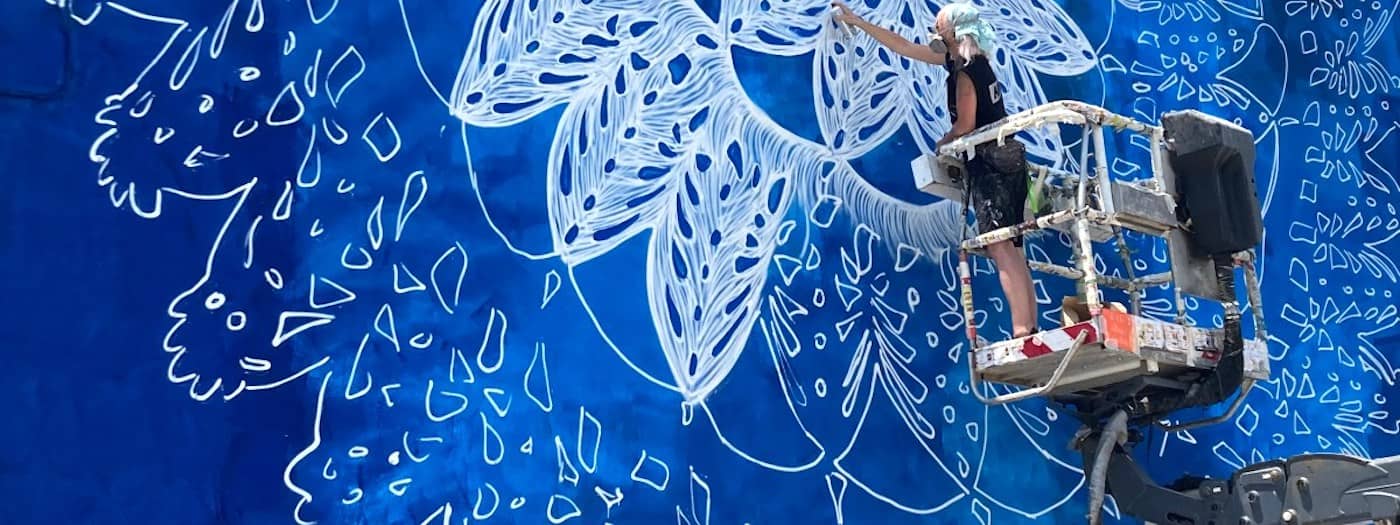
Art Walk Festival | Patras, Greece | 2021
What reactions do you want to evoke in the viewer?
Once, I was painting a big, illegal piece under a flyover, near a church. Suddenly the cops showed up. Of course, I didn’t have any permission, so they wouldn’t let me finish and started writing a ticket. At that moment, the mass ended in the church and a dozen elderly women came out. When they came over and saw what I was painting, they shouted at the policemen to leave me alone. After twenty minutes of arguing they won, the policemen left, and I was able to finish. That’s the kind of reaction I would like to evoke.
So do you think that because of the incorporation of old traditions and crafts into contemporary public art, your art is accessible to more people, especially the older generation?
Exactly. But I also believe that my works emit positive energy, whatever that means. People just like them; many people smile when they see them.
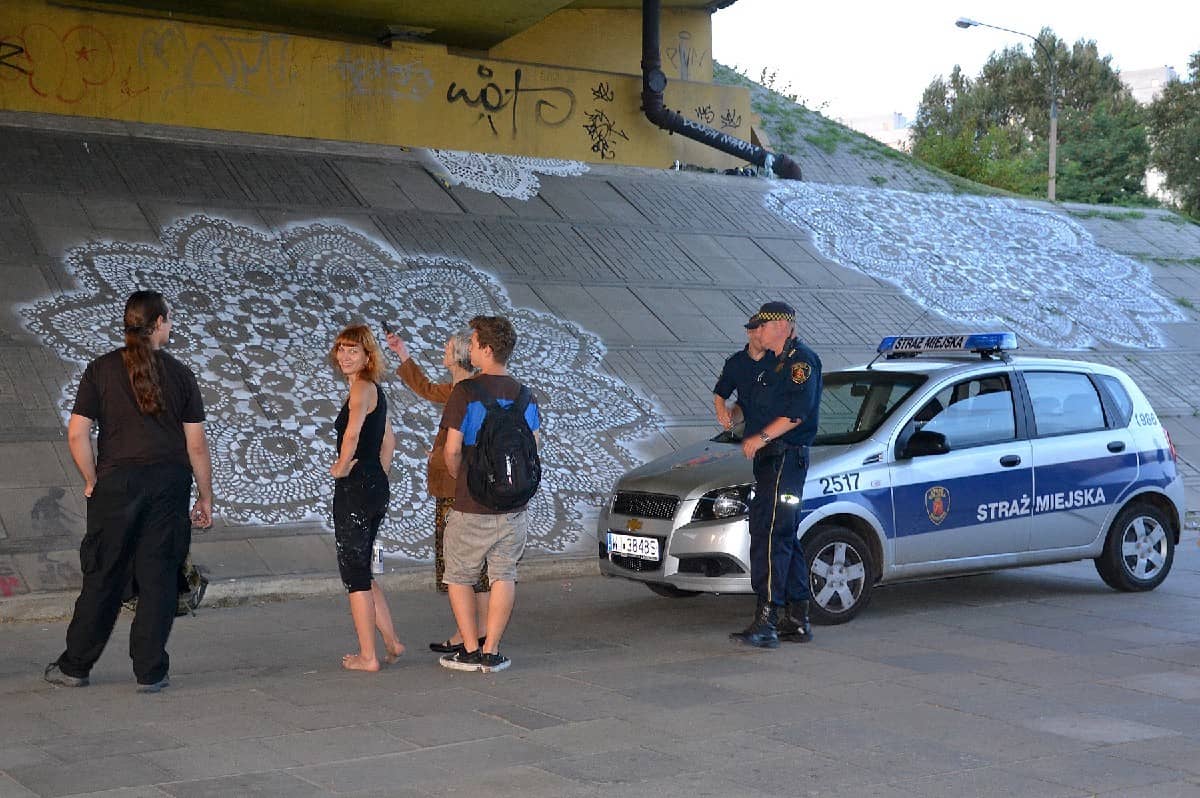
Warsaw, Poland | 2012
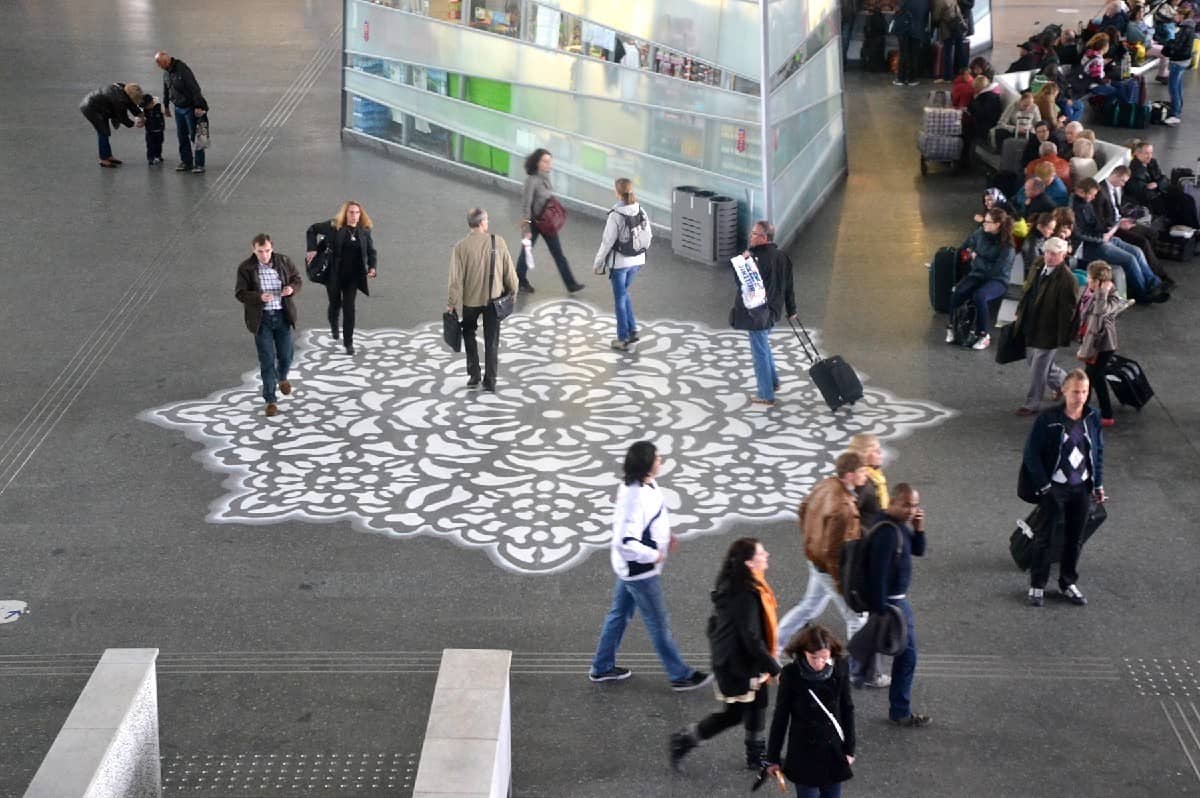
Warsaw, Poland | 2013
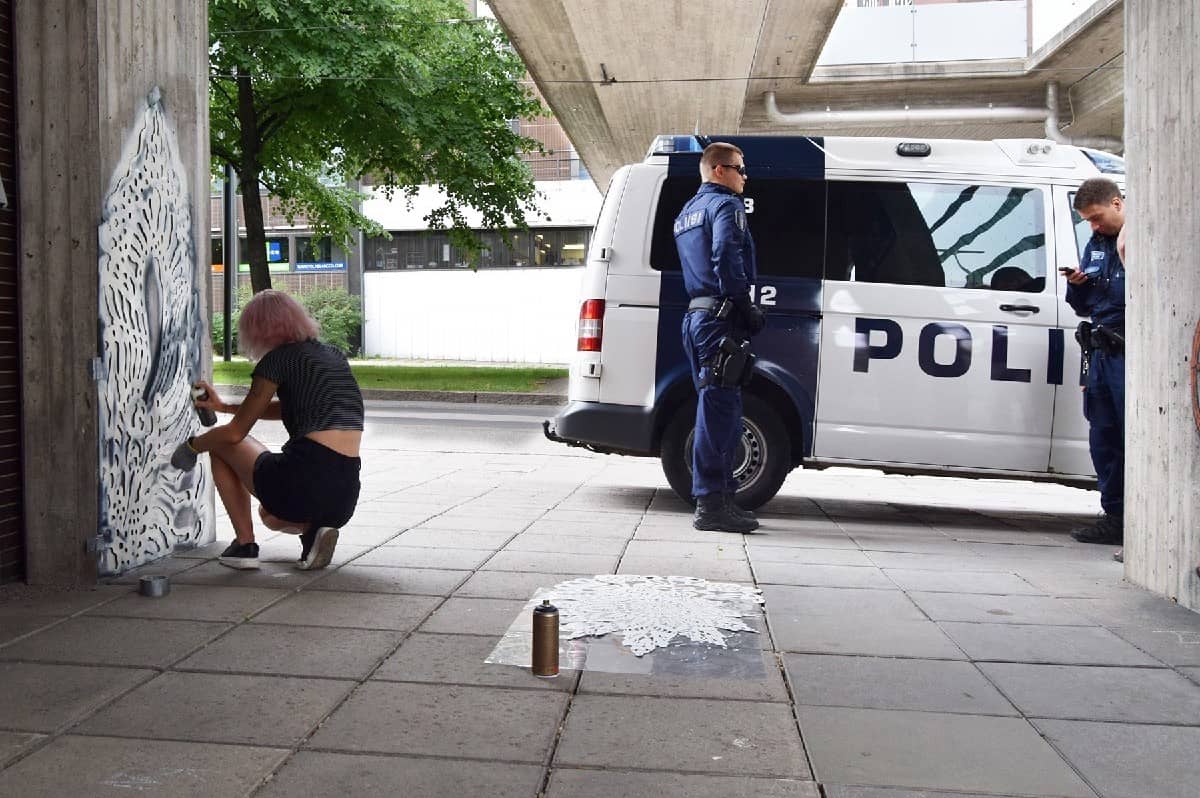
Helsinki, Finnland | 2018
Your aim is to create “positive art and to deal with positive emotions”, but you also use your works to draw attention to social and political issues that are important to you. What issues do your works deal with? How do you manage to convey “heavy” themes in your delicate art?
I am talking in my works about such problems as the impending water crisis, deforestation, post-war traumas, religious radicalization, or fake news, but these projects are not as easy in perception as lacy street art, so they are not as popular. My approach to difficult topics is like a proverb: “Instead of fighting evil, it’s better to spread good.”
Can street art influence issues within a country? Do you think street art can influence society?
I come from Poland, a country where, in the 1980s, mass-painted graffiti and political street art (yes, we had it back then) were tools that literally destroyed the PR image of the communist regime.
Of course, street art has the power to influence society.
How would you describe the climate and the vibe of the urban art scene in Warsaw, and Poland in general?
The street art scene is not big, and we all know each other. When there is someone new, we try to get to know them, do something together. It’s a bit like a family. I really like being part of this bunch.
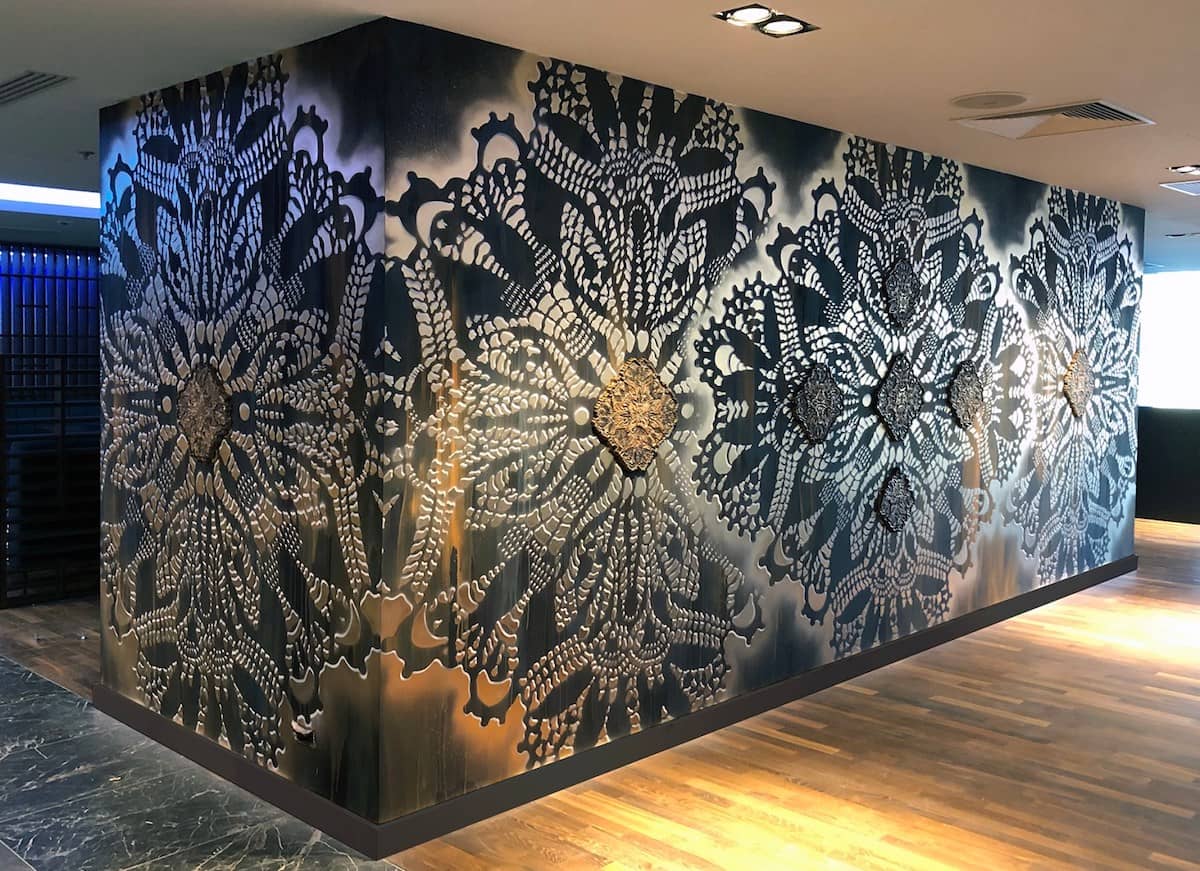
Propaganda Gallery for NYX Hotel
Warsaw, Poland | 2020
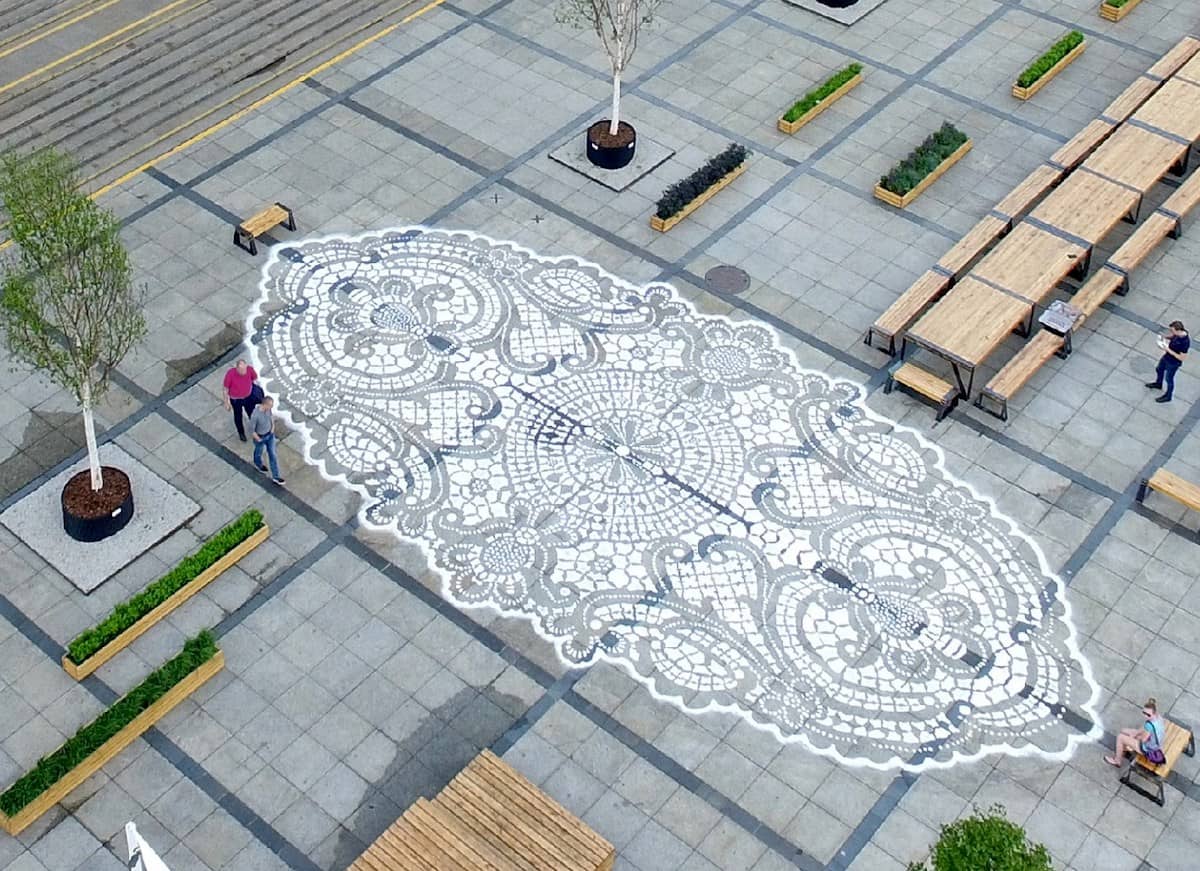
Warsaw, Poland | 2016
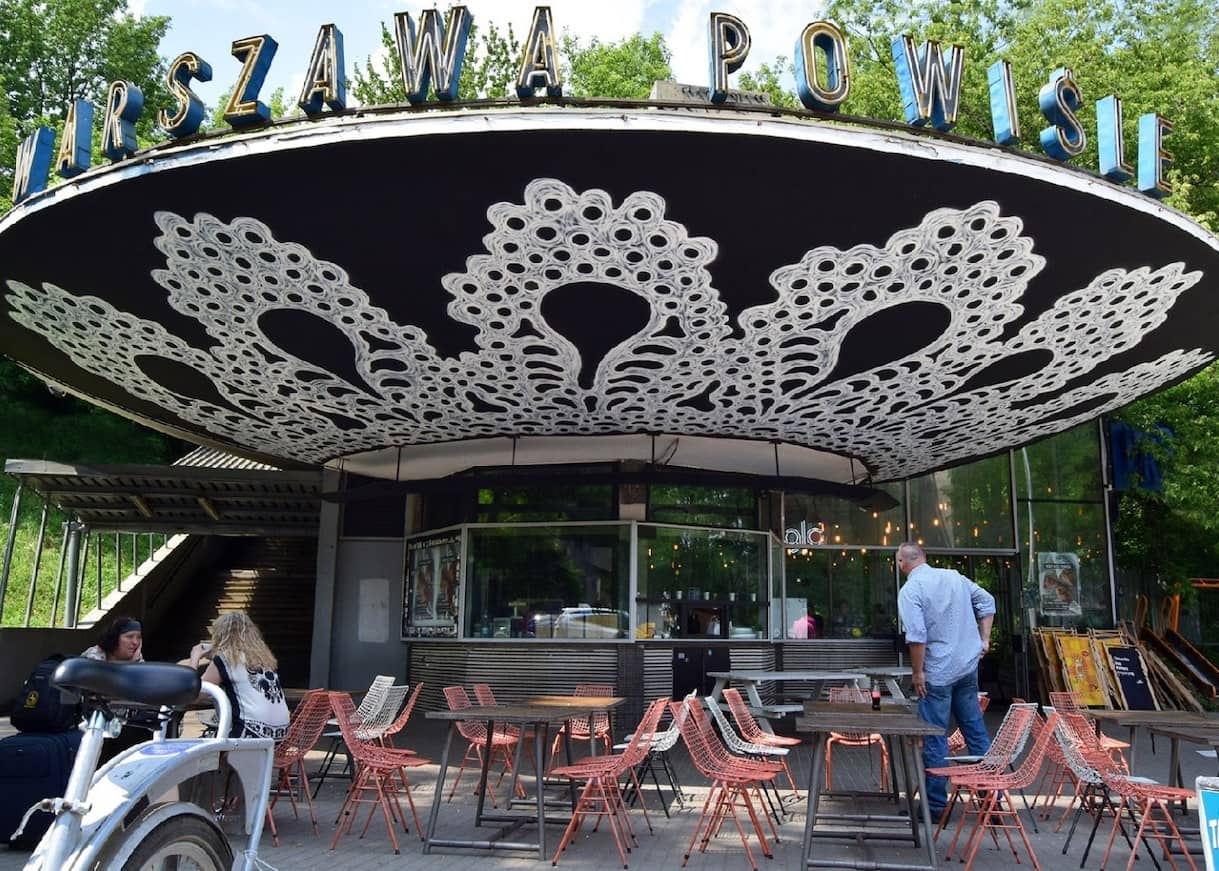
Warsaw, Poland | 2019
What’s next for you? Any plans or dreams for the future?
My aim is to do large-scale multimedia installations in public spaces. The first one will be in Berlin, in front of the Reichstag. At the exhibition in 2042, I will show my project “Thoughts,” which started in 2012. Every year, I make small porcelain petal-shaped forms for several months. I am able to produce about 50kg of these ceramic petals per year. Today there are 400kg of them, and 1,500kg will be on display in 2042.
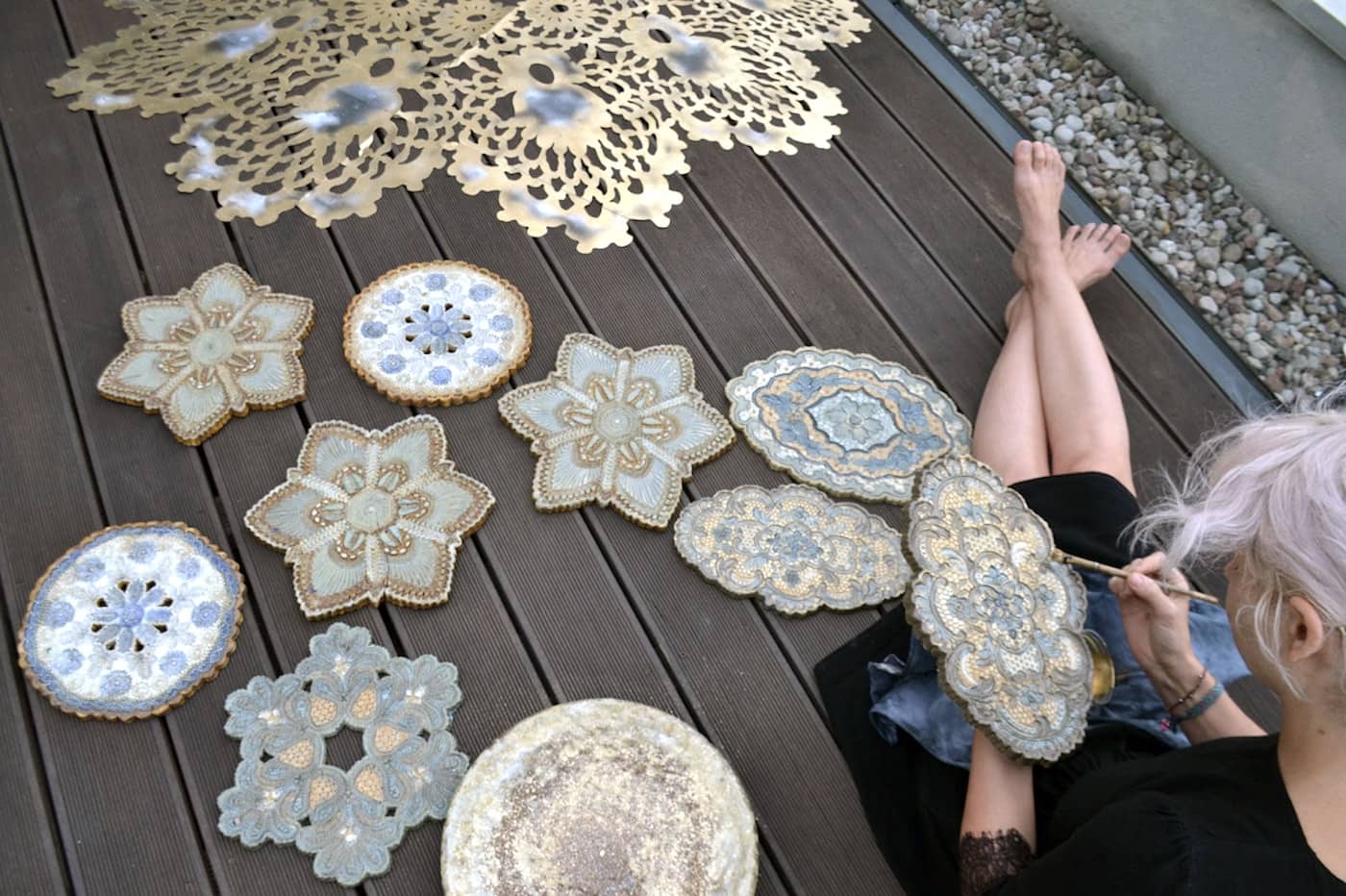
_______________________________________
Pictures © NeSpoon
July 2021
by Laura Vetter


